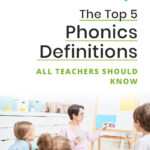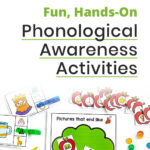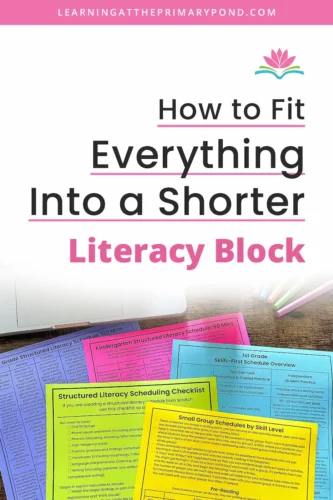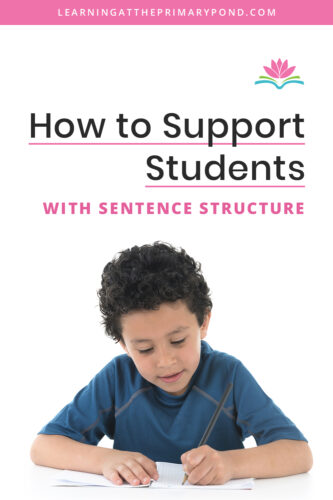Pre-reading skills lay an important foundation for children to become strong readers! At first glance, the term “pre-reading skills” might sound like it only includes learning the alphabet. But there is so much more to it than that!
In this post, you’ll find lists of pre-reading skills and simple activity ideas. These pre-reading activities are great for small group in Kindergarten!
Phonological Awareness and Phonemic Awareness Activities for Pre-Readers
First up, we have phonological awareness and phonemic awareness!
Becoming more aware of – and learning how to work with – the sounds in words helps students learn to eventually match those sounds to letters (which is essential for learning to decode words).
Phonological awareness is an umbrella term that includes:
- Rhyming
- Distinguishing between individual words in a sentence
- Blending and segmenting syllables
- Blending and segmenting onset and rime
- Blending and segmenting phonemes
- Adding, deleting, or substituting phonemes
The last two bullet points are considered phonemic awareness. A phoneme is an individual speech sound, like the /m/ in “mat” or the /sh/ in “sheep.” Phonemic awareness skills are the most important ones out of this list of phonological awareness skills.
With pre-readers, you might start with rhyming. Say two words aloud and have students repeat them. Then, ask them to show a thumbs-up if they rhyme, or a thumbs-down if they don’t.
You can also put this activity on paper with a sheet like this, where students circle “thumbs up” or “thumbs down” to indicate if two words rhyme.
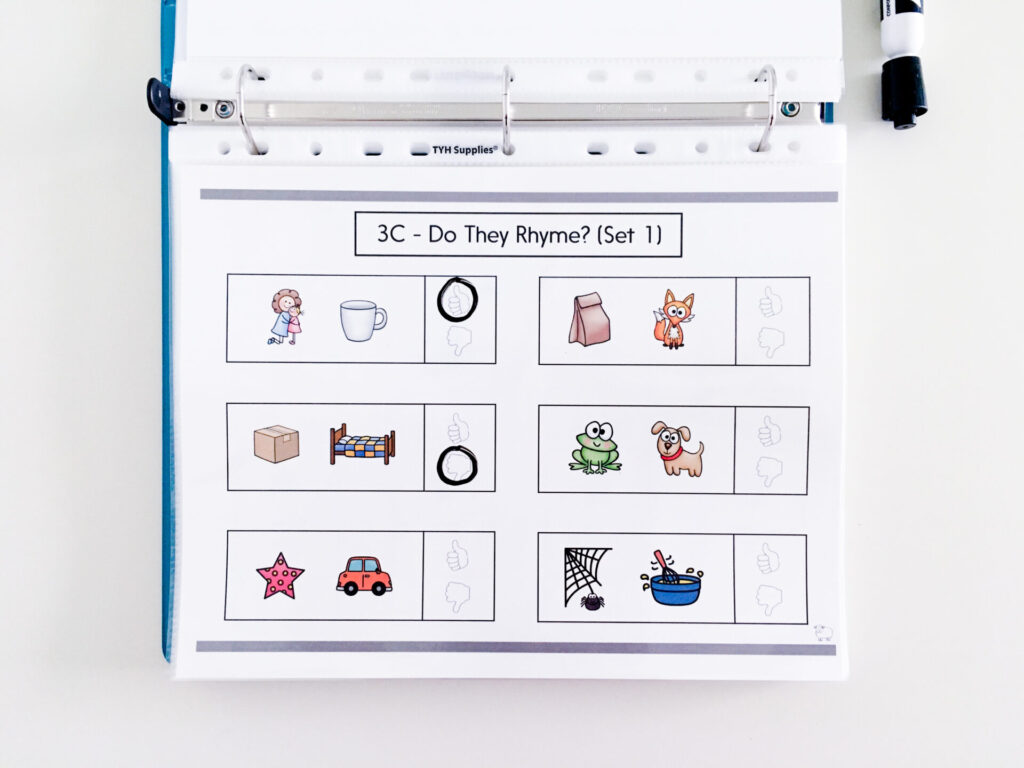
As soon as possible, we want to get kids to the point where they can isolate individual sounds, like the first sound in a word. This activity has students circle a thumbs-up if two pictures start with the same sound (like “bag” and “banana”) or thumbs-down if they don’t.
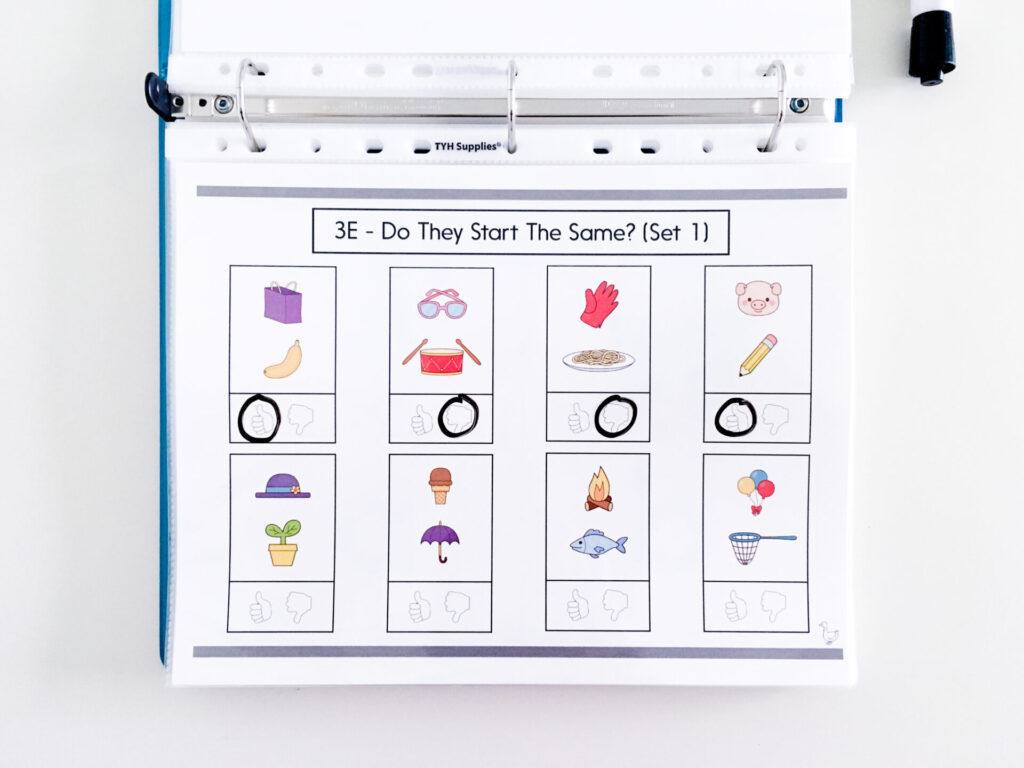
My Small Group Activity Binders for Pre-Readers includes additional activities for the most important phonological awareness skills.
Letter Knowledge: Letter Names and Sounds Activities for Pre-Readers
Of course, we can’t omit letter knowledge in our list of pre-reading skills! Students need to get to know what letters look like, as well as learn their names and sounds.
If students have limited or no letter knowledge, you might choose to begin with a simple sort that gets them to pay attention to the features of letters. In this sort, students sort letters based upon whether they have holes or not. This is best done with magnetic letters.
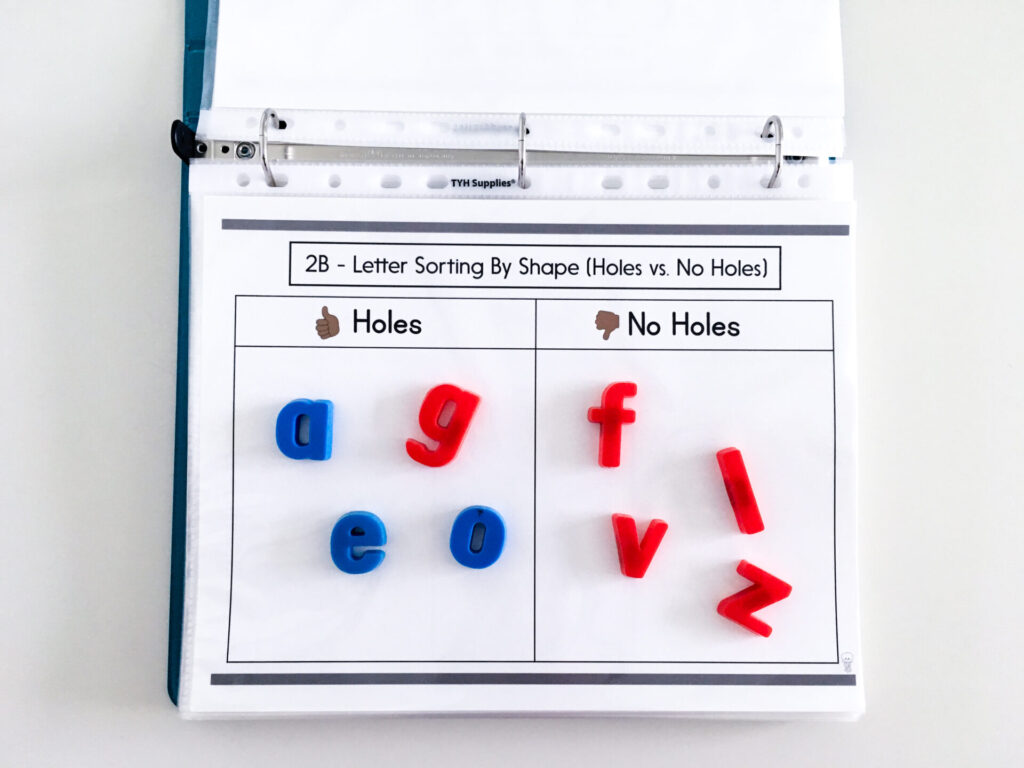
This sort is a little more challenging and has students identify whether letters have curves, straight lines, or some of both. Again, use magnetic letters; students can actually run their fingers along the sides of the letters. (Note that in this photo, there is a mistake – f has both straight lines and a curve!)
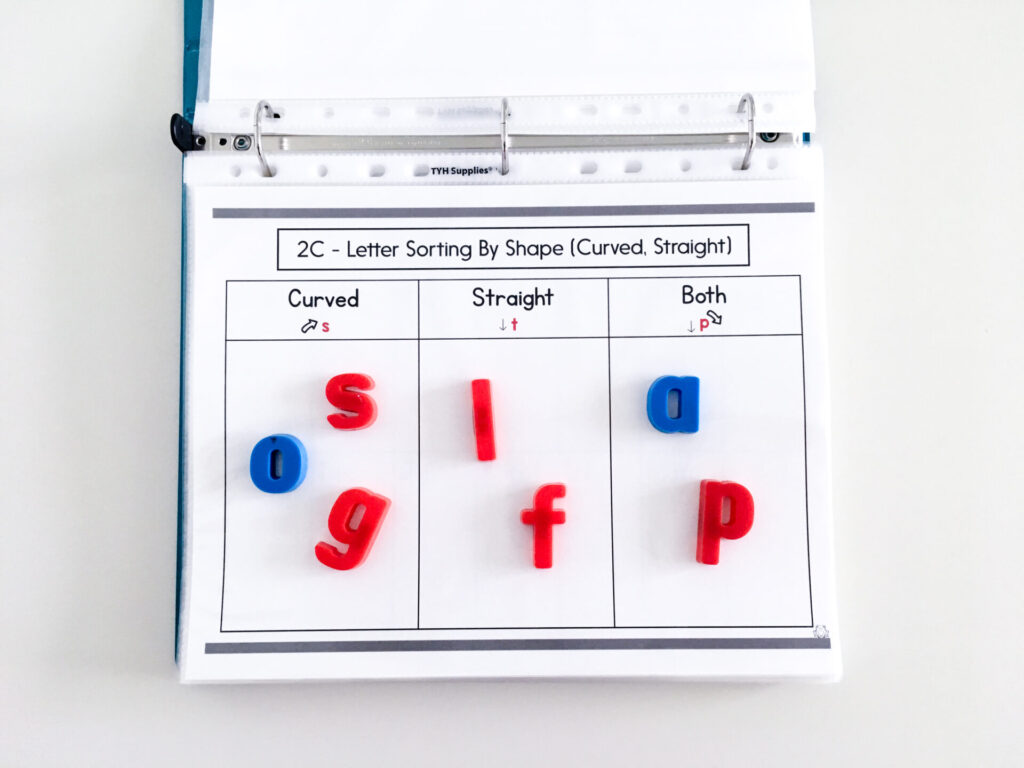
We also need to help students to match capital letters to lowercase letters. Here’s another simple activity where students use magnetic letters to find the matching lowercase letter.

Students don’t have to fully master letter names before you move on to letter sounds. The research indicates that we should teach both together! In this activity, students write a letter for the first word in each picture. The page is in a page protector, so students can use a dry erase marker and wipe it off when they are finished.
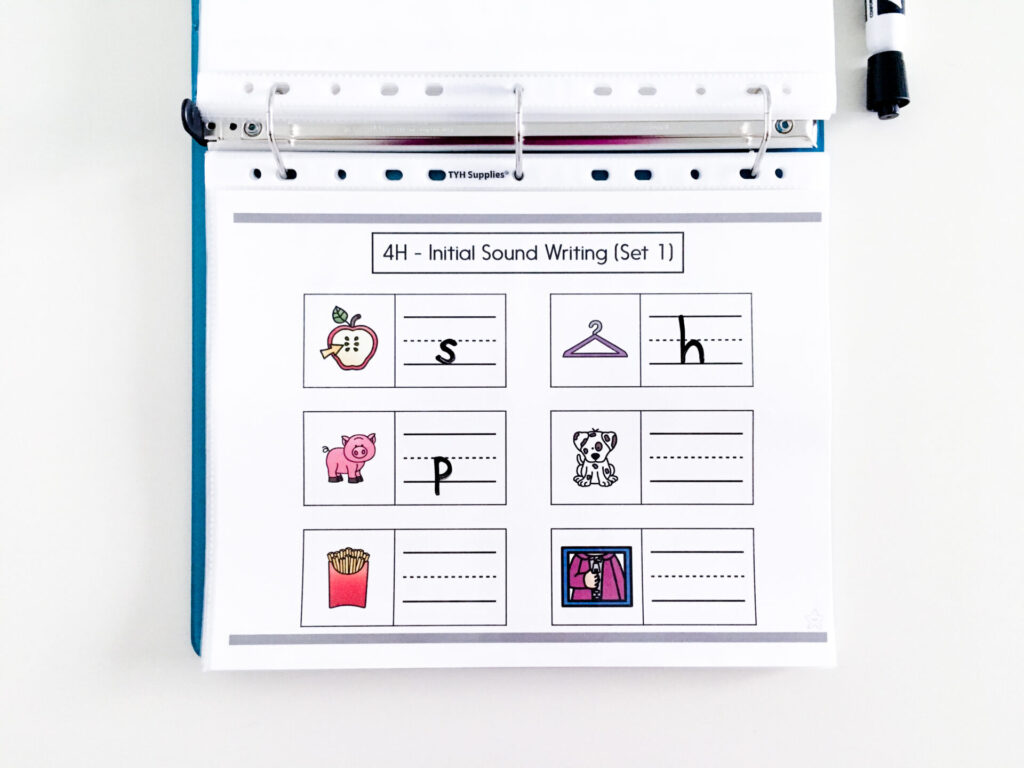
Games are so fun for reviewing letter names and sounds! In this game, each student gets a different version of the “Feed the Monster” sheet. The teacher calls out a letter name or sound (your choice) and students have to cover the letter IF they have it on their page. The first player to cover up all their letters has finished feeding the monster and is the winner!
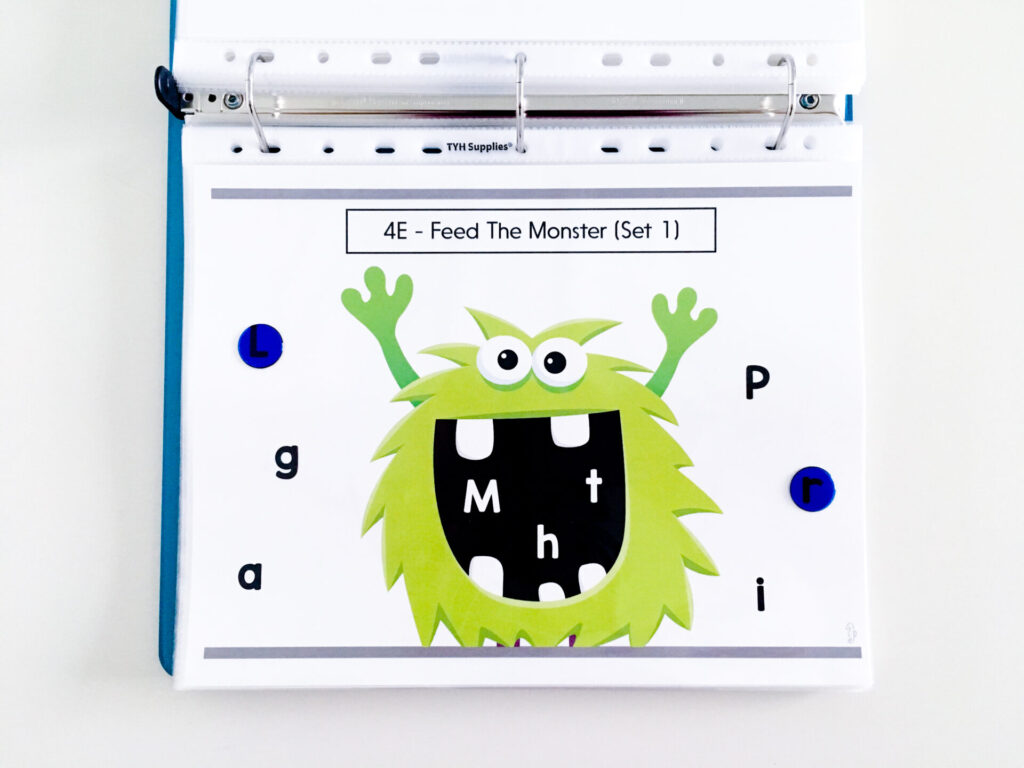
Print Awareness / Concepts of Print Activities for Pre-Readers
Print awareness, also sometimes called “print concepts” or “concepts of print,” is a set of skills that students will eventually use when they begin to read books on their own.
Concepts of print skills include:
- Knowing the difference between the words and pictures
- Understanding that the print can be read
- Holding a book and turning pages correctly
- Reading from top to bottom and left to right
- Pointing under the words
- “Return sweep” when you finish a line
- Understanding of front cover, back cover, spine, title page, author, and illustrator
- Concept of letter vs. word vs. sentence
- Concept of spacing between words
- Knowledge of punctuation marks
I typically develop students’ knowledge of print concepts by reading to and with them. Big books or projected books are great for showing students where to begin reading, how to point under the words, etc. When you use a large text like this, it’s easier for students to see what you are doing.
In small group, I might do a shared read with my pre-readers to reinforce these concepts. I don’t do this every day, but it’s a great occasional addition.
I also sometimes do an activity like this, where students have to circle the words. This teaches them the concept of a word vs. concept of a letter.
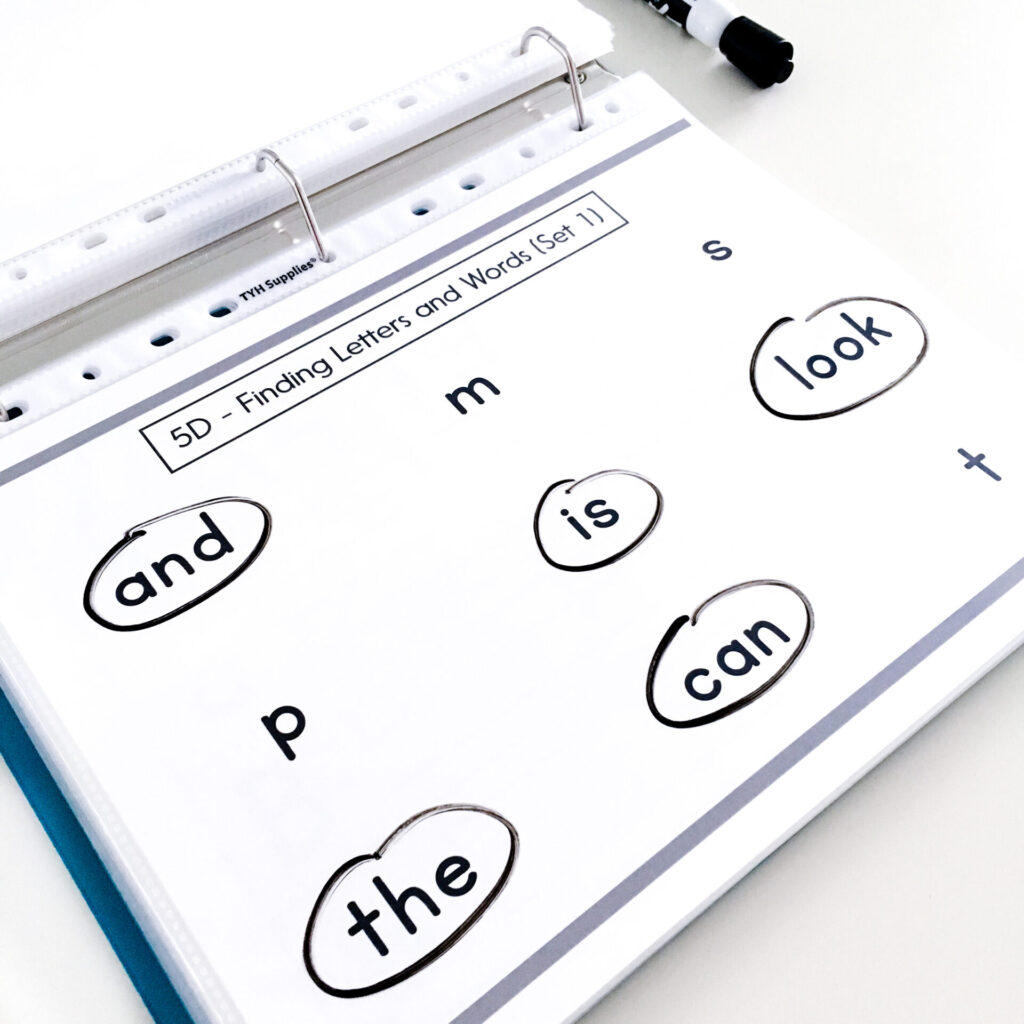
Other Skill Areas for Pre-Readers
Other important skills that we want to work on with pre-readers include:
- Fine motor skills
- Letter formation / handwriting
- Oral language skills
- Vocabulary knowledge
- High frequency words (only after students have mastered at least a handful of letter sounds; there’s no rush here)
Need activities to work on all these skills? My Small Group Activity Binders for Pre-Readers include all the activities shown in this post and SO much more!
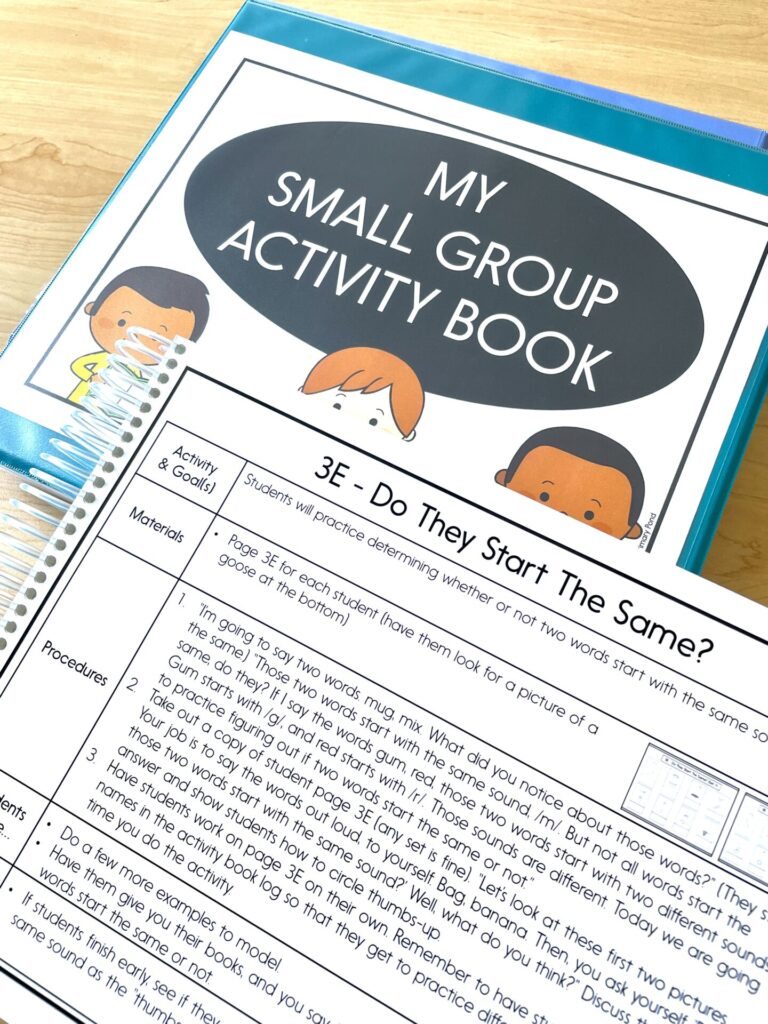
You can use the printable resources however you choose, but I love to set up a teacher’s manual and then a binder for each student. I place each activity page in a page protector, and students write with dry erase markers. I also add manipulatives like magnetic letters and counters.
In my experience, this is so much easier than having tons of miscellaneous sheets! The binders keep everything all in one place and help my pre-reader small group lessons go more smoothly and quickly!
Save These Activities for Pre-Reading Skills!
If you’d like to come back to these activities later, save this post! You can add the pin below to your Pinterest account. That way, you’ll be able to quickly find these activities for pre-reading skills later, when you’re ready to use them!
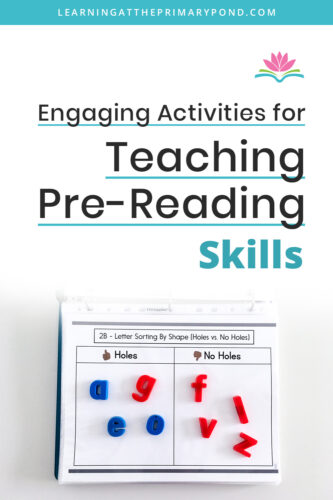
Happy teaching!


